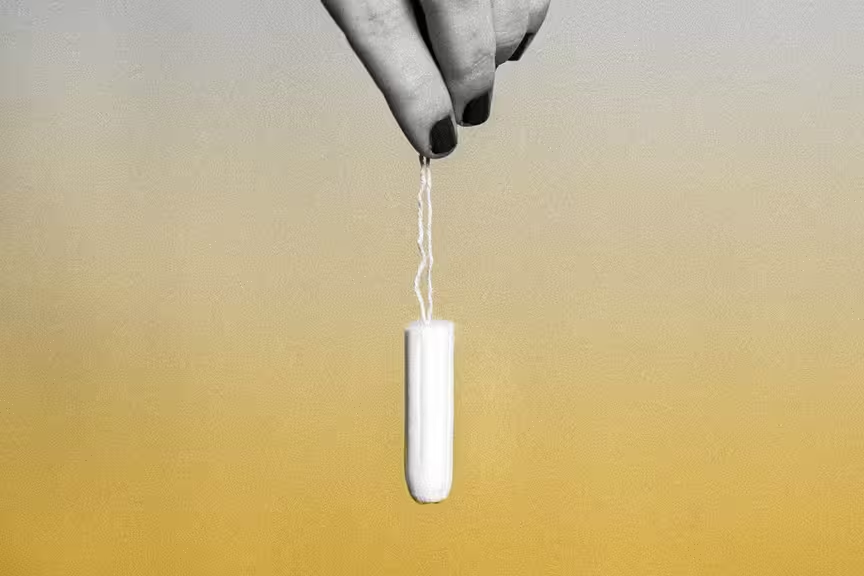In recent years, growing concerns about personal hygiene products, particularly tampons, have emerged. Health-conscious consumers are paying more attention to what they put in or on their bodies, and tampons—widely used by millions of women worldwide—have been no exception. The recent scrutiny over toxic metals potentially present in tampons has sparked questions about the safety of these everyday products. So, should you be worried? Let’s dive into the findings.
What are Toxic Metals?
Toxic metals refer to a group of metals that can be harmful to human health even in small amounts. These include heavy metals such as lead, mercury, cadmium, and arsenic, which are known for their potential to cause significant health problems. Over time, exposure to these metals can lead to toxicity, affecting various bodily systems like the kidneys, liver, and nervous system. These toxic metals are found naturally in the environment and can make their way into a wide range of products, including food, water, cosmetics, and, as recent studies suggest, even tampons.
How do Metals End Up in Tampons?
Tampons are made primarily from cotton, rayon, or a combination of both. Cotton, when grown conventionally, may be exposed to pesticides and fertilizers that contain trace amounts of metals. Similarly, the manufacturing process for rayon, a synthetic fiber made from wood pulp, might involve chemicals that could introduce metals. Additionally, tampons are sometimes treated with bleach and other substances to ensure they are pure and white, which may also contribute to the introduction of harmful substances.
A common pathway for these toxic metals entering tampons is contamination during cultivation, harvesting, or manufacturing. While the amounts detected in most products are generally low, the concern arises from the cumulative effect of repeated exposure, particularly for a product that comes into direct contact with sensitive tissues.
Recent Studies and Findings
The concern about toxic metals in tampons is not just speculative; some recent studies have found alarming levels of trace metals in personal care products. In a 2022 study conducted by the Environmental Working Group (EWG), researchers tested various menstrual hygiene products and found low but detectable levels of toxic metals in some tampon brands. These included trace amounts of lead, cadmium, and mercury—metals known to accumulate in the body over time and linked to serious health concerns, including reproductive health problems.
However, the levels found in the study were much lower than those known to cause immediate harm. The issue, therefore, becomes one of chronic, long-term exposure rather than acute poisoning. These findings raise questions about whether even low levels of exposure over many years could contribute to health risks.
Potential Health Risks
The primary concern regarding toxic metals in tampons is their possible effect on reproductive health. Heavy metals like lead and cadmium are known endocrine disruptors, meaning they can interfere with hormone function. Long-term exposure to such substances has been linked to fertility issues, birth defects, and even miscarriage.
Another worry is the absorption of these metals into the body through the vaginal tissue, which is highly permeable. This means that any harmful chemicals or metals in tampons could be more easily absorbed into the bloodstream. Chronic exposure to metals like lead and mercury can lead to a range of health problems, including neurological disorders, kidney damage, and increased cancer risk.
In addition, some experts express concern that prolonged exposure to low levels of toxic metals could exacerbate conditions such as endometriosis or lead to inflammatory responses within the body.
Industry Response and Regulation
The tampon industry has responded to the growing concerns by reassuring the public that their products are safe. Many manufacturers argue that the trace amounts of metals found in tampons are far below the levels known to cause harm, citing the fact that their products meet safety standards set by regulatory bodies such as the Food and Drug Administration (FDA).
Currently, the FDA classifies tampons as medical devices, which means that tampon manufacturers must comply with specific safety standards. However, these standards primarily focus on preventing bacterial contamination, such as the risk of toxic shock syndrome (TSS), rather than testing for the presence of metals or other chemicals.
In Europe, tampon regulation tends to be stricter. The European Union’s REACH (Registration, Evaluation, Authorization, and Restriction of Chemicals) legislation places greater emphasis on limiting harmful substances in consumer products, including tampons. Despite this, studies show that even in regions with tighter regulations, trace metals can still be detected in menstrual products.
Should You Switch to Organic Tampons?
For those concerned about the potential health risks associated with toxic metals in tampons, organic alternatives may seem like a safer option. Organic tampons are typically made from 100% organic cotton and are free from synthetic materials, pesticides, and bleach. Some women opt for organic tampons because they believe they are less likely to contain harmful chemicals or metals.
However, even organic cotton can be exposed to environmental contamination during growth and processing. While organic tampons may reduce the risk of chemical exposure, they are not necessarily free from all contaminants, including toxic metals. The decision to switch to organic products should be weighed against other factors, such as personal comfort, cost, and availability.
Other Safer Alternatives
Aside from switching to organic tampons, many women are now exploring other menstrual hygiene alternatives that could potentially reduce their exposure to toxic metals. Menstrual cups, for instance, have gained popularity in recent years. These silicone-based products are reusable, reducing both cost and environmental waste, and are generally free from harmful substances.
Reusable cloth pads are another eco-friendly alternative that can minimize chemical and metal exposure. Made from organic cotton or bamboo fibers, these products do not require chemical treatments and are often favored by those seeking to avoid synthetic materials altogether.
Period panties, designed to absorb menstrual flow without the need for tampons or pads, are also an emerging option. While these offer the advantage of being free from insertable products, consumers should still check for potential chemical treatments in the fabric, as some brands may apply stain-resistant coatings that could contain unwanted substances.
Moving Forward: Is More Regulation Needed?
The debate surrounding toxic metals in tampons has fueled calls for stricter regulation and transparency in the personal care industry. Many advocacy groups are urging regulatory bodies to expand testing requirements for tampons, to include not only bacterial contamination but also chemical and metal content.
As it stands, consumers must rely largely on manufacturers’ claims about the safety of their products, with limited oversight into the presence of potentially harmful substances. More comprehensive regulations and labeling requirements could help consumers make more informed decisions about the products they use.
The possibility of new legislation requiring greater transparency, similar to what has been done with cosmetic ingredients, is also on the horizon. Activists continue to push for more stringent testing and disclosure to protect women’s health.
A Word of Caution for Consumers
For now, the evidence does not definitively suggest that the trace amounts of toxic metals found in tampons pose an immediate health threat. However, the cumulative effects of long-term exposure remain a concern. While researchers continue to study the potential risks, consumers may want to stay informed and consider exploring safer alternatives.
If you’re worried about toxic metals in tampons, it’s essential to weigh the pros and cons of different menstrual products, be mindful of the ingredients used in the products you choose, and, if possible, opt for those with greater transparency about their materials and manufacturing processes.
Staying Informed and Safe
With the topic of toxic metals in tampons gaining more attention, it’s crucial to stay informed and prioritize safety when choosing menstrual products. Keeping an eye on future research and regulatory changes will help consumers make better choices and ensure long-term health.
In an age where health-consciousness is growing and more information is becoming available, understanding the risks associated with tampons—and taking steps to minimize them—is a proactive approach to personal health.





